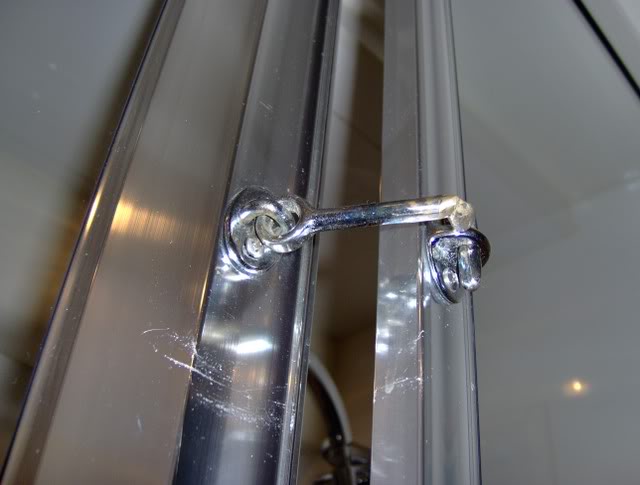Wifey B: Not about to post anything here about my best technique or any of my techniques or inventions.
Send Us PM Then!!

Wifey B: Not about to post anything here about my best technique or any of my techniques or inventions.


1) Here is a pretty simple way to keep us reminded of where the ATONs belong. See the red and green "snack bag" clips on the windshield? When there's a lot going on we find these can be very helpful reminders. (Yes, that's the Great Bridge, Virginia lock just ahead.)
Not sure that finds the deeper water. Where the waterway bends, the deeper water is likely to be on the outside of the bend, where the water runs most.... If you are working your way into a shallow creek you aren't familiar with, it is temping to stay right in the center but if it starts to shallow, you don't know whether to go right or left for deeper water, if you intentionally offset yourself to the right side, not only are you being courteous, but you know where to steer for deeper water.

Not sure that finds the deeper water. Where the waterway bends, the deeper water is likely to be on the outside of the bend, where the water runs most.
The point is to intentionally run a little offset from where you think the center of the channel is, if you know where you are along a contour line, you know where to head for better water.
Not the contour line on the plotter, the contour line that your sounder helps you find.
OK....so if you don't know where they are because the plotter can't show you positively, you still read the water, structure or zig zag till you find the deepest vwater.
Any one depth sounder contour can run you up a blind alley onto a sandbar.
So hugging your right side of the channel helps with the Navrules, but does nothing with helping you find deepest water.
Our point all along.
OK....so if you don't know where they are because the plotter can't show you positively, you still read the water, structure or zig zag till you find the deepest vwater.
Any one depth sounder contour can run you up a blind alley onto a sandbar.
So hugging your right side of the channel helps with the Navrules, but does nothing with helping you find deepest water.
Our point all along.
Ooops...missed the post where suntan lotion is the most important thing in navigation.
I like it around here. Generally we have very deep water until you hit a rock.

My best addition was after I bought the boat some 5 years ago. I needed to solve the problem of stowing the rib on the top deck.
I bought a Badland 3500lb winch from Harbour Freight ($140) 2 stainless schaeffer wire blocks from $130(ebay) Usual 4 g wires from the base of the mast through the funnel to the distribution panel in the engine room. I mounted the winch at the base of the mast, ther wire swivel block as high under the boom as possible to get a goo as possible flight as can be attained. and a wire block at the end of the mast. I also changed the wire to stainless SWL 3700lb. The system has worked flawlessly. We cruise 6 months a year and haul the boat almost daily. The only upgrade has been to modify the wire sheaves in the blocks and change them for bronze and upgrade the clevis pins for higher rated bolts. Probably did the whole thing for less than $500. Much better than the many thousands for a crane.
Emergency Instructions
Living at anchor for four months each year has involved me in saving a number of boats that were dragging. Fortunately not Bay Pelican. Frequently this involved a strange boat the systems of which were unknown to me. Frequently the boat was locked up tight and the rescuers had to deal with the anchor chain by hand and guess work.
Over the last two years I have set up Bay Pelican so that the windlass and engines can be powered and started even if the boat is locked up. A series of instructions starting at the windlass have been posted so that a boater could reasonably figure out how to work both. I had the instructions imprinted on plastic so they would survive the weather. Bay Pelican has an exposed upper bridge which now has controls for starting the engines. The windlass power switch was installed in the dock box on the foredeck.
I hope my streak of not dragging continues, but if rescue is needed someday I expect the instructions will be helpful. I am not concerned about someone stealing the boat. My assumptions is that anyone trying to steal a Krogen 42 will have no compulsion against breaking a door window.
